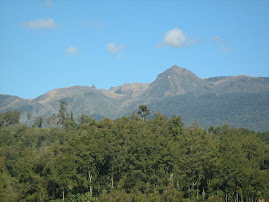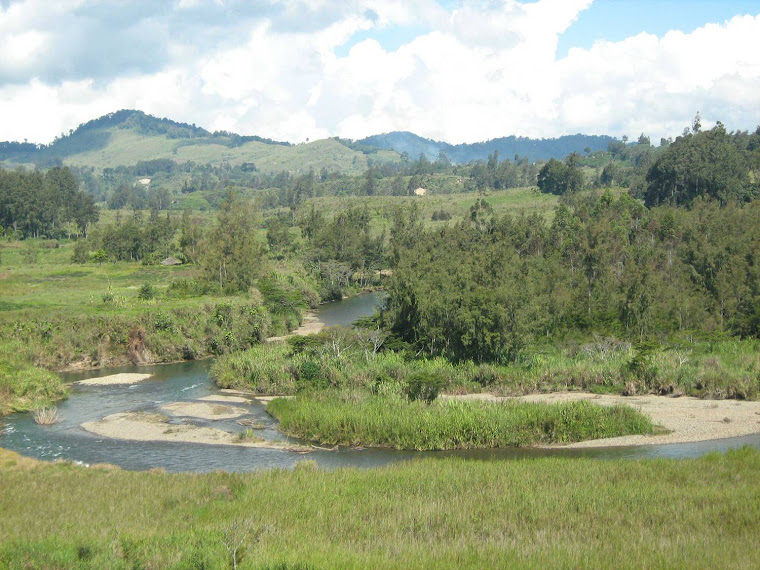This article was published by Sunday Chronicle under "Letter from China" column on June 26, 2009
..............
By Tony Jack Manab in Beijing
ONCE again ni hao and xie xie (hallow and thank you) for you who have being constantly following up on my weekly articles on this column.
This weekend marks my second last article on the column as time is closing in for me to come back to Papua New Guinea.
On this note, I am content that with the number of articles I have written so far has at least given you fair information about China and its people.
Just as I stated in my past articles and so for this weekend, I am bringing you an interesting story about our visit to Chengdu city, the capital of Sichuan province.
Sichuan province has a total population of 48, 230, 000, situated at China’s south-west and dwells the upstream of the Yangtze River where spring, winter, warm summer is long and moist monsoon are heavily felt and has an average temperature of 33 degrees Celsius.
The province governs 12 locally administered levels, 3 autonomous prefectures, 124 counties and 18 county - level cities. With China’s reform and opening up foreign policy, 50 county cities in the province are now opening up to the outside world.
Agriculture is more developed in Sichuan with high yields of paddy rice, wheat, sugar cane, silkworm and tea thus known as the ‘Land of Abundance’.
Chengdu is the capital of Sichuan and is located west to the Sichuan Basin and near to Minjiang River which is an ideal area for hydraulic engineering.
Its irrigation canal net fans out as far as the Chengdu Plain. Chengdu is also known as China’s south-west financial, science and technological center.
With its far-reaching political, economical and educational developments, Chengdu remains one of the most important cities for the state economy.
Chengdu is also the country’s most historical city with relevant and evidential historical evidences from museums dating back to about 200 years AD.
We flew out of Beijing on Tuesday July 14 for Chengdu city and checked in at Garden City Hotel which is right in the heart of the city.
The whole afternoon was devoted to Sightseeing at Huanhua River Park and later visited Sichuan Provincial Museum.
Huanhua River exists as a traditional water way for the ancient dynasties dating back to 200 BC and currently remains as one of the famous sites for sightseeing for tourists visiting Chengdu city.
Sichuan Provincial Museum is in fact the largest museum ranking ahead of others and located amid the Huanhua River which is about 30 minutes drive from the hotel.
We were guided and led by several tour guides who were able to explain and tell us about the significance of different artifacts which were used during the ancient times of the Song, Qing, Han and Ming Dynasties.
It was amazing to see the images of pottery official figures and traditional knives that were once used during the Song Dynasty in between 960 and 1279 AD.
The pottery images were collected from Yangliu village. The ancient people used pottery as means to survival and performing cultural rituals.
In fact, the Pottery making industry developed in Sichuan Province in Han, Qing and Ming Dynasties and developed on original basis. These pottery wares were used as sacrificial utensils and funerary wares for worshipping the ancient gods, and the ancestors in the Han Dynasty for reflections of manorial economy and lavish burial ceremonies.
The molding and embossed decorations depicts different skills used in pottery making. For instance the combining skills of the plain appearances, vigorous, bold and unconstrained style, the internal charm and other reach local features of the pottery sculpture in Han Dynasty are fully represented.
There were also images of ancient tombs that consisted of the front door, the atria, the second door, the main court, the main palace, the middle court, the surrounding palace and the left, middle and right room of the palace.
The tomb reflects the infinite mausoleum burial system in early Han dynasty.
Wednesday July 15 was our second day in Chengdu city and we also spent the whole day visiting the San Xing Dui Museum and later went for a walk at Jinli Ancient Street which is about 2000 years old.
The San Xing Dui Museum stands out as one of the oldest museums in China and known for showcasing different tools that were used during the ancient time dating 2000 years from now.
The agricultural tools unearthed from tombs together with the large vine vessels imply that agriculture was developed and there was high productivity to generate surplus grains for brewing wine.
Stockbreeding and farming artifacts supplementing each other represents agricultural prosperity during the ancient times.
Miniature pottery sculptures unearthed and displayed at the museum in large quantity represents various themes and forms of humans, animals and plants.
These lively images freely created show a keen observation of life in the past and a heightened artistic sensibility of the ancient people.
On Thursday July 16, we had a half day visit to Shangzhi Shoe Limited Company and Jiaolong Industrial Port which are some of the leading institutions towards Sichuan’s gowning economy and to China’s booming economy.
In the afternoon we had a seminar with officials from Sichuan Provincial Department of Commerce. The theme of the seminar was Sichuan’s Foreign Trade, Sichuan’s investment environment, its development ranking and the effects of the 2008 Sichuan earth quake.
With regard to foreign trade, Sichuan Province has long standing economic relations with many developing countries and this contributes to its increase trade volume each year.
Reduced trade barriers are like an open door for Sichuan to enter into economic cooperation with the South East Asian nations as well as the Pacific region.
The officials also asserted that Sichuan would be an ideal investment environment for foreign companies when its new railways are completed.
Sea transportation does not seem to be a problem for bigger ships as there are big river passages that run to the seas.
On the industrial ratings, Sichuan ranks as China’s most inland comprehensive industrial base as it is the home to famous industries like Chengdu Electrical Appliances, Chengdu Kapok Steel and Iron, Sichuan oil and gas field, Zigong Chemical Industry, Neijiang Sugar Industry and Luzhou and Ipin Wine Industries.
China’s rapid development is the direct result of having ‘development zones’ in all its provinces.
These development zones are actually industrial cities that are described as the powerhouse for development in every province. This principle has tripled down to the provincial levels like Sichuan.
The two main purposes for development zones is to further the development process within counties.
Secondly, for a strong economic base to rely on in events when a natural disaster strikes.
For instance, the aftermath of the earthquake in the outskirts of Sichuan Province last year left more than 60, 0000 people dead, 20 million people homeless and towns and villages destroyed.
Chinese government had sufficient funds and administrative support from Chengdu and other development zones to do the rehabilitation work on infrastructures, rebuilding the cities and towns which are expected to take another two years before completion.
Food supply during the relief operation was sufficient to feed the victims and the government was able to find employments for people who lost their jobs due to the earthquake.
On Friday July 17, we visited the Biogas Institute of the Ministry of Agriculture where we were told about how the agriculture is so important to the economy of Sichuan province.
The agricultural sector is one of the major push factors to the booming economy of Sichuan.
In this regard the municipal government has set up sound policies to encourage the growth of the agricultural sector in the province.
Saturday July 18, marked the end of our field trip so checked out from Garden City Hotel after breakfast, and boarded for Beijing the same morning.
In conclusion, the field trip was basically an excursion for the participants to see and experience the outdoor realities of what we are actually learning from the seminar.
Next Sunday I will bring a concluding article based on my overall experience that will sum up the all lots of articles I have written so far.
For now, it’s Zai Jian (bye)
Note: Tony works with International Relations & Aid Oversight Unit, Dept of PM and NEC. He is currently in Beijing for a two months seminar on Economic Administration for Developing Countries. Tony will tell us more on his experience next Sunday. For comments, email m_yakai@hotmail.com. This column tells you the experience of Papua New Guineans in China.
American movie include Fijians as cast and crew
7 years ago









No comments:
Post a Comment